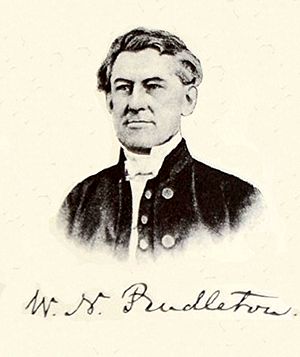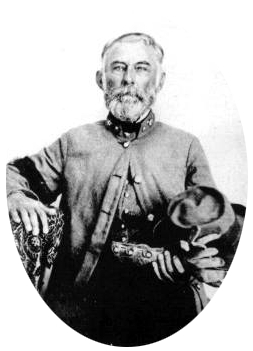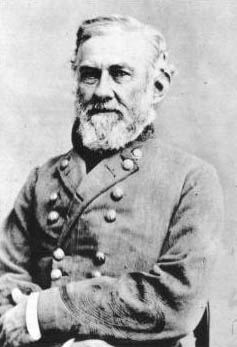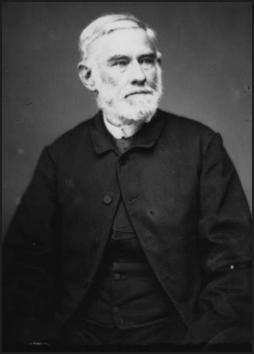William N. Pendleton facts for kids
Quick facts for kids
William Nelson Pendleton
|
|
|---|---|
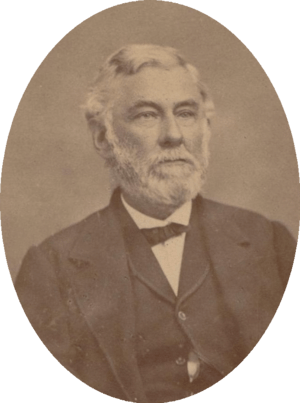
William Nelson Pendleton
|
|
| Nickname(s) | "Parson" Pendleton |
| Born | December 26, 1809 Richmond, Virginia |
| Died | January 15, 1883 (aged 73) Lexington, Virginia |
| Place of burial |
Oak Grove Cemetery
Lexington, Virginia |
| Allegiance | |
| Service/ |
|
| Years of service | 1830–33 (USA) 1861–65 (CSA) |
| Rank | |
| Battles/wars | American Civil War |
| Other work | Episcopal priest |
William Nelson Pendleton (born December 26, 1809 – died January 15, 1883) was an American teacher, Episcopal priest, and soldier. He is best known for being a Confederate general during the American Civil War. He served as Gen. Robert E. Lee's main artillery leader for most of the war. After the war, Pendleton went back to being a priest and wrote religious books. Camp Pendleton in Virginia Beach, Virginia, is named after him.
Contents
Early Life and Education
William Nelson Pendleton was born in 1809 near Richmond, Virginia. He grew up on his family's farm in Caroline County. Private teachers taught young William at home. He also went to John Nelson's School.
William's family wanted his older brother to go to the United States Military Academy at West Point. But his brother wasn't interested in the military, so William went instead. He started at West Point in 1826 and finished four years later. He was one of the top students, ranking 5th in his class of 42 cadets.
Some of William's classmates at West Point became famous later. These included future Confederate generals Joseph E. Johnston, Robert E. Lee, and John B. Magruder. Jefferson Davis, who would become the Confederate president, was also a classmate.
After graduating, Pendleton became a second lieutenant in the United States Army. He was sent to Fort Moultrie in Charleston, South Carolina. But he got sick with malaria and had to move to Augusta, Georgia to get better.
In 1831, Pendleton returned to West Point to teach math. He left the U.S. Army in 1833. He then taught math at Bristol College in Bucks County, Pennsylvania. Later, he taught at Newark College in Delaware.
Becoming a Minister and Teacher
In 1838, William Pendleton became an Episcopal priest. Bishop William Meade of Virginia made him a priest. In 1840, he became the first principal of the Episcopal High School in Alexandria, Virginia.
A few years later, he moved to Baltimore, Maryland. There, he served as a priest in two churches. He also worked at All Saints' Church in Easton, Maryland. In 1847, Pendleton moved to Frederick, Maryland to lead All Saints Church. In 1853, he returned to Virginia. He became the priest at Grace Episcopal Church in Lexington. He stayed there when the American Civil War began.
Service in the Civil War
When the American Civil War started in 1861, Pendleton decided to support the Confederate cause. He joined the Confederate Artillery as a captain in March. In May, he was chosen as a captain in the Virginia Artillery.
He led a group of four cannons called the Rockbridge Artillery. These cannons were first used for training at the Virginia Military Institute. Pendleton named his cannons "Matthew, Mark, Luke, & John" after the writers of the Gospel.
On July 2, Pendleton and his cannons fought well in a small battle called the Battle of Falling Waters. On July 13, he was promoted to colonel. He became the chief of artillery for General Joseph E. Johnston during the First Battle of Bull Run on July 21. He was hurt in this battle, getting injured in an ear and his back.
From July 1861, Pendleton led the artillery for the Confederate Army of the Potomac. When the army was renamed the Army of Northern Virginia in March 1862, he continued in this role. On March 26, he was promoted to brigadier general.
After Robert E. Lee took command of the army in June 1862, he tried to replace Pendleton. However, Pendleton was a personal friend of Jefferson Davis, the Confederate president. This helped Pendleton keep his important job.
Pendleton's most famous moment in the Civil War happened during the 1862 Maryland Campaign. After the Battle of Shepherdstown on September 19, Lee told Pendleton to guard the Potomac River crossings overnight. Pendleton had a good position to defend the river. But he lost track of his soldiers and got confused. He woke Lee up after midnight, saying his position was lost and all his cannons were captured. This was not true; he had only lost four cannons. He had also pulled back his soldiers without a good reason. Newspapers in Richmond wrote about this incident, and soldiers told jokes about him.
Pendleton stayed with the Army of Northern Virginia for the rest of the war. He took part in major battles in 1863 and 1864. In the last two years of the war, Pendleton's job was mostly about managing supplies. He was in charge of the reserve ordnance. Throughout the war, he continued to preach to his soldiers. Pendleton surrendered with Lee's army at Appomattox Court House on April 9, 1865. He then went home.
After the War and Death
After the war, Pendleton went back to Lexington, Virginia. He continued to be the priest at Grace Church for the rest of his life. In Lexington, he remained good friends with Matthew Fontaine Maury, Francis Henney Smith, and Robert E. Lee. Pendleton helped convince Robert E. Lee to move to Lexington. Lee then became the president of the school that is now Washington and Lee University. Lee also became one of Pendleton's church members. In 1870, Lee's last public act was at a church meeting where he helped raise Pendleton's salary. Reverend Pendleton led Lee's funeral in October 1870.
On January 17, 1873, during a memorial for Robert E. Lee, Pendleton said that James Longstreet was to blame for Lee's loss at the Battle of Gettysburg. He claimed that General Lee had ordered Longstreet to attack early on July 2, 1863. But the attack didn't start until much later. Pendleton falsely said that Longstreet disobeyed orders and that this delay caused the battle to be lost. This idea became a big part of the "Lost Cause" story.
Pendleton stayed in Lexington until he died in 1883. He worked hard to promote the "Lost Cause" and protect Robert E. Lee's good name. He traveled around the South to raise money for the Robert E. Lee Memorial Church (which used to be Grace Church) in Lexington. He is buried next to his son at Oak Grove Cemetery. The first service in the new church building was Reverend Pendleton's funeral.
Family Life
On July 15, 1831, William Pendleton married Anzolette Elizabeth Page. They had four children together.
His only son, Alexander Swift "Sandie" Pendleton, also fought for the Confederacy. He was an aide to Stonewall Jackson. Sandie was badly wounded and died on September 20, 1864, after the Battle of Fishers Hill. William's daughter, Susan, married Edwin Gray Lee on November 16, 1856. Edwin G. Lee later became a Confederate general.
In Popular Culture
William Nelson Pendleton was played by John Castle in the 2003 Civil War movie Gods and Generals. In the movie, there is a scene where Pendleton talks with Stonewall Jackson about his son, Alexander Swift "Sandie" Pendleton, who is also there. Pendleton tells Jackson that he named his cannons Matthew, Mark, Luke, and John. Jackson replies, "I'm sure your men will spread the gospel wherever they encounter the enemy."
See also
 In Spanish: William Nelson Pendleton para niños
In Spanish: William Nelson Pendleton para niños


